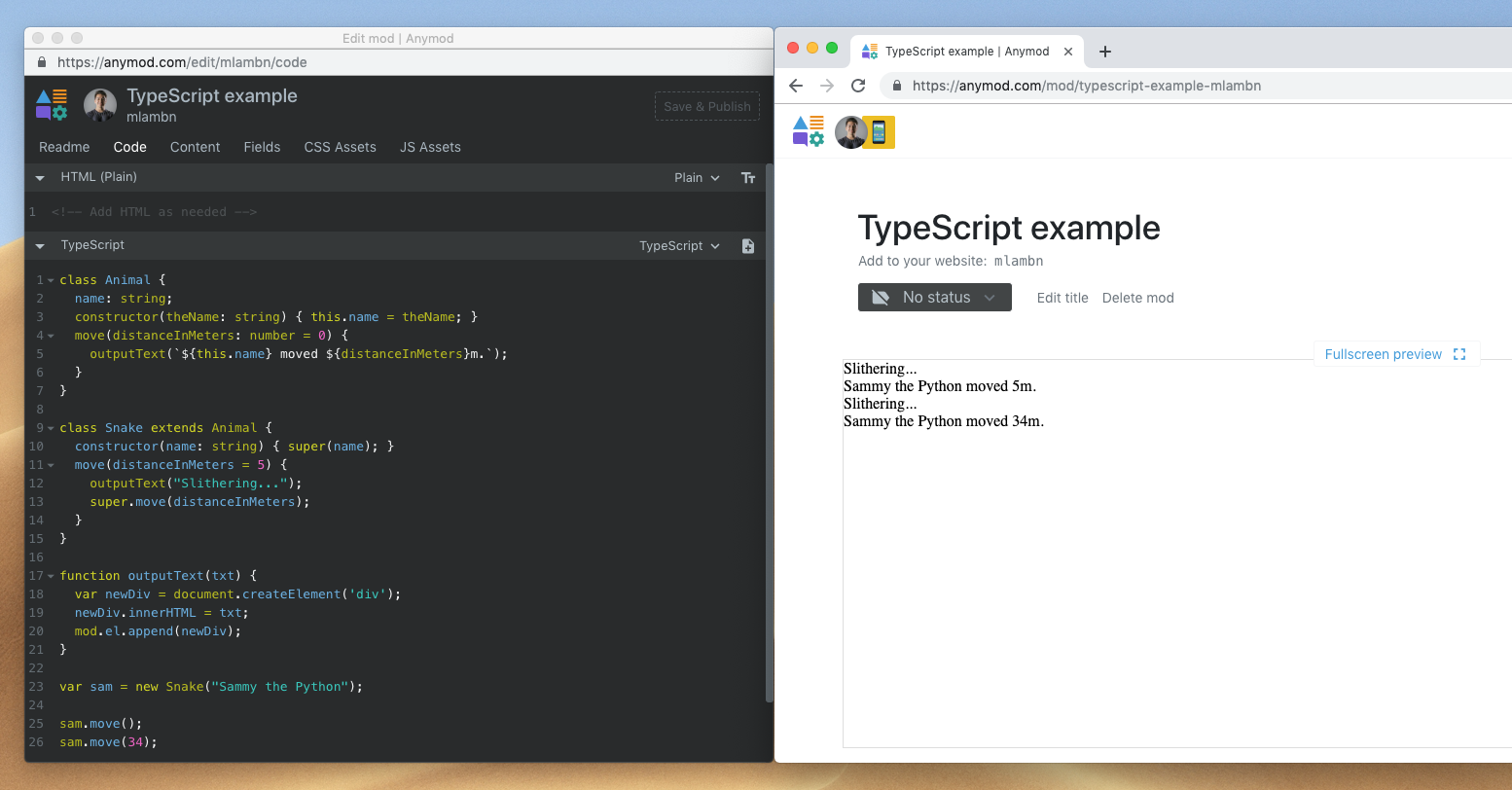In this example, we'll use TypeScript in a mod.
# 1. Set your mod to TypeScript mode
Select TypeScript from the JS panel dropdown:

# 2. Add some TypeScript
Add the TypeScript below to your mod. A few features of TypeScript highlighted here are:
- Line 1: Use a
classdefinition to define general behavior - Line 2: Define the
nameattribute with the type set tostring - Line 4: Set a default value of 0 for the
distanceInMetersvariable - Line 5: Use string interpolation to insert
${this.name}and${distanceInMeters} - Line 9: Use
extendsto create a class that inherits properties from theAnimalclass - Lines 11-14: Create a
movefunction that performs an action (outputText()) and then calls themovefunction for the parent class withsuper.move()
class Animal {
name: string;
constructor(theName: string) { this.name = theName; }
move(distanceInMeters: number = 0) {
outputText(`${this.name} moved ${distanceInMeters}m.`);
}
}
class Snake extends Animal {
constructor(name: string) { super(name); }
move(distanceInMeters = 5) {
outputText("Slithering...");
super.move(distanceInMeters);
}
}
function outputText(txt) {
var newDiv = document.createElement('div');
newDiv.innerHTML = txt;
mod.el.append(newDiv);
}
var sam = new Snake("Sammy the Python");
sam.move();
sam.move(34);
# 3. Result
Saving the mod will reload its preview, which should look like:
Slithering...
Sammy the Python moved 5m.
Slithering...
Sammy the Python moved 34m.

The above TypeScript is pre-compiled into "regular" ES5 JavaScript automatically, and this JavaScript is what ultimately runs in the browser when the mod is loaded.
TIP
For more about TypeScript, see the official docs (opens new window)